In today’s realm of the ecommerce landscape, it’s more important than ever to have a robust email marketing strategy that incorporates a variety of campaigns to reach your audience effectively. As marketing expert Neil Patel rightly puts it,
“Email marketing is not dead, but it’s up to you to keep it alive.”
Email marketing is an incredibly effective way to reach your target audience and drive sales in the ecommerce world. Approximately 44% of customers regularly check their email in hopes of discovering deals and promotions from their favorite brands. With so many businesses competing for consumers’ attention, it’s essential to have a well-crafted email marketing strategy that incorporates alluring campaigns to stand out from the crowd.
To help you stay ahead of the curve, we’ve put together a comprehensive guide on 11 essential ecommerce email marketing campaigns that you simply cannot afford to overlook. From welcome emails that set the tone for your brand to cart abandonment campaigns that encourage customers to complete their purchases, these campaigns will help you engage with your audience in a meaningful way and build a loyal customer base. So, let’s dive in and discover the power of these 11 crucial email marketing campaigns.
Email marketing campaigns essential for ecommerce growth
1. Welcome email series
As an ecommerce business owner, you already know the importance of making a strong first impression. A well-crafted welcome email series is your chance to do just that. Think of your welcome email series as a guide that walks new subscribers through their journey with your brand. This series of emails should provide essential information, like how to get started with your products or services, and offer a sneak peek at what’s to come.
Take the ecommerce brand, Mejuri, for example. They use their welcome email series to introduce new subscribers to their minimalist, yet elegant jewelry collection.

Their first email welcomes subscribers with a special offer and encourages them to browse the website and discover their favorite pieces. The subsequent emails in the series offer helpful tips for styling their jewelry, as well as a behind-the-scenes look at their design process.
By providing value and showcasing its unique brand personality, Mejuri’s welcome email series stands out in a crowded inbox and leaves a lasting impression on its customers.
2. Promotional Emails
Promotional emails are a great way to drive sales and generate revenue for your eCommerce business. They come in different forms, including seasonal sales and flash sales. Designed to entice customers to make a purchase by offering exclusive deals and discounts, these emails can take various forms, including seasonal sales and flash sales, among others.
a) Seasonal sales
Seasonal sales emails capitalize on festive or holiday-related demand by offering limited-time discounts and special offers.
Ahava, a luscious skincare brand, is an excellent example of this. They offer their customers exclusive discounts and bundles during major holidays such as Valentine’s Day and Mother’s Day.

By making the most of seasonal demand, Ahava generates additional revenue and creates a sense of excitement among its customers.
b) Flash sales
Flash sales create a sense of urgency and encourage subscribers to act fast to take advantage of exceptional deals before time runs out. This type of promotional email is often used by ecommerce brands to move excess inventory or to generate quick revenue.
For example, clothing brand Aritzia often sends out flash sale emails to their subscribers, offering exclusive discounts for a limited time.
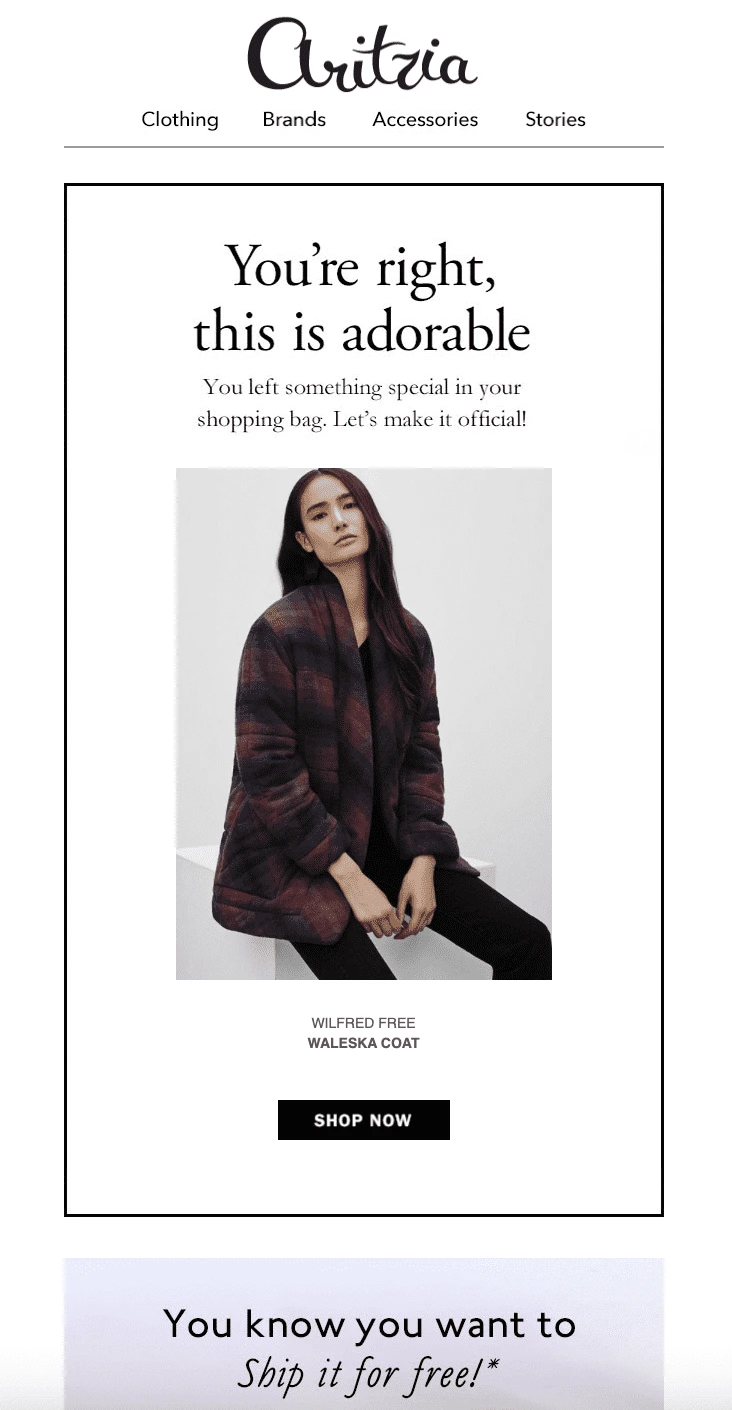
These promotions create a sense of excitement and drive sales in a short period, making flash sales an effective promotional email campaign type for ecommerce businesses.
3. New Product Launch Emails
Launching a new product or service can be a make-or-break moment for an ecommerce business, and a well-executed email marketing campaign can make all the difference. By sending out a series of carefully crafted emails in the lead-up to the launch, you can build excitement and anticipation among your subscribers, creating a sense of exclusivity and encouraging them to be among the first to experience your new offering.
One great example of this type of campaign comes from the fashion brand Madewell.
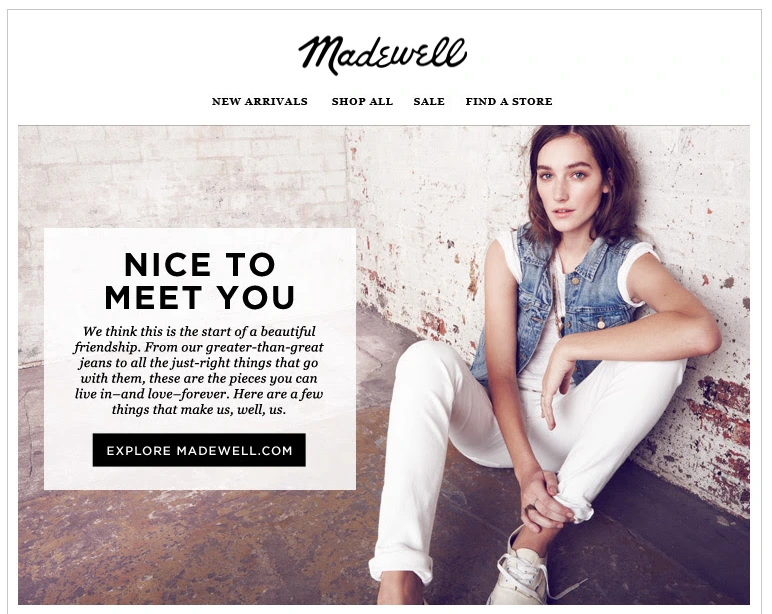
When they launched their new line of denim, they sent out a series of emails featuring sneak peeks, behind-the-scenes photos, and early access to the new styles for their email subscribers. By tapping into the curiosity and enthusiasm of their audience, they were able to create a buzz around their new collection and drive sales right from the start.
4. Cart Abandonment Emails
Cart abandonment emails can be a powerful tool in your ecommerce arsenal. Research shows that a whopping 70% of online shopping carts are abandoned before the transaction is completed. That’s where cart abandonment emails come in.
These emails offer a gentle reminder to customers that they have items waiting in their cart, and often include special offers or incentives to encourage them to complete their purchase. By leveraging the power of cart abandonment emails, you can recover lost sales and boost your bottom line.
For example, the popular ecommerce brand, ASOS, sends a cart abandonment email with a clear and concise message, along with an image of the abandoned product, and a call-to-action to complete the purchase. This type of email can not only increase sales but also improve customer experience by providing a personalized touch.
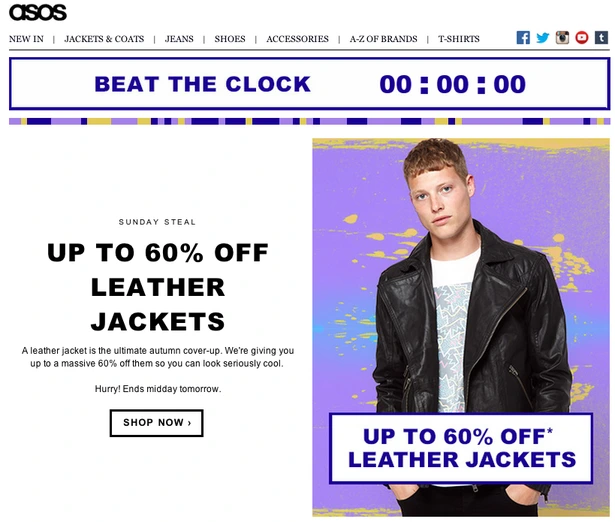
5. Re-engagement Emails
Re-engagement emails are an effective way to bring back customers who have lost touch with your brand. These emails aim to rekindle their interest by offering them something valuable and relevant, such as a discount or exclusive content. By doing so, you can turn an inactive subscriber into an engaged customer and increase the chances of future sales.
The key to crafting effective re-engagement emails is to identify why subscribers may have lost interest in your brand in the first place. Once you’ve identified the problem, you can address it directly in your email and offer a solution or incentive to get them to re-engage with your brand. This approach can help you win back customers who may have otherwise been lost for good.
An excellent example of a successful re-engagement email campaign is by H&M. The brand sent out an email titled “We Miss You!” with a clear call to action to entice inactive subscribers.

The email included a discount code as an incentive to encourage the subscribers to come back and shop again. This type of personalized approach can make subscribers feel valued, and appreciated, and rekindle their interest in your brand.
6. Post-Purchase Emails
Post-purchase emails are an important way to engage with customers and maintain a positive relationship with them. When crafting post-purchase emails, it’s important to strike the right balance between showing appreciation and making a request.
Make sure the tone of your email is genuine and not overly promotional or pushy. Personalization is also key, as it helps to create a sense of connection between your brand and the customer.
a) Thank You Emails
Sending a personalized thank-you email to customers after they have made a purchase is a great way to show your appreciation for their business and make them feel valued. This email can also include important information such as shipping details and expected delivery dates.
Artifact Uprising specializes in creating custom photo books, prints, and gifts. They prioritize sustainability and quality in their products and aim to help customers turn their memories into tangible keepsakes.

Their thank you emails could express gratitude for the customer’s purchase, remind them of the memories they captured with their product, and encourage them to share their experience with others through social media or a product review.
b) Product Review Requests
Product review requests are another type of post-purchase email that can help boost your ecommerce brand’s credibility and sales. Encouraging customers to leave a review after they have received and used your product can help build trust and credibility for your brand. Positive reviews can also influence other potential customers to make a purchase and generate social proof leading to increased sales and revenue for your ecommerce business.
Rothy’s is a sustainable fashion brand that creates shoes, bags, and accessories from recycled plastic water bottles and other eco-friendly materials.
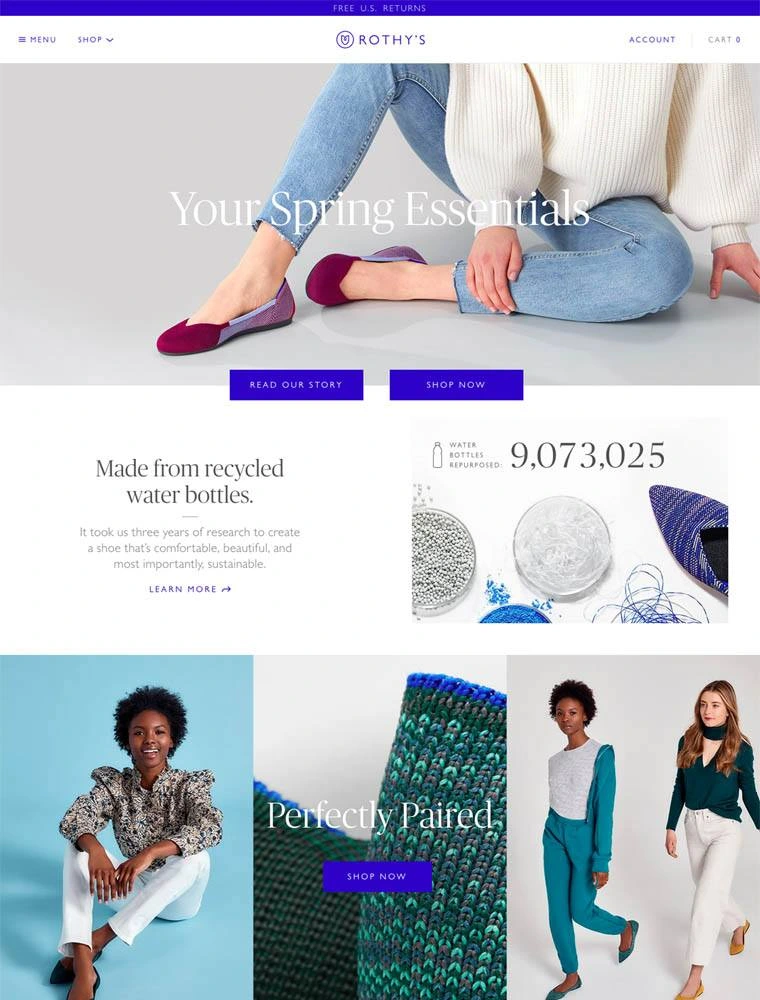
The brand has a strong focus on sustainability and transparency, and they often encourage their customers to leave product reviews to help them improve their products and provide better experiences for their customers.
7. Personalized Product Recommendations
Personalized product recommendation emails are a great way to leverage customer data to provide customized product suggestions to your subscribers. By analyzing their past purchases, browsing behavior, and demographic information, you can recommend products that are relevant to their interests and needs.
These types of emails enhance the shopping experience and create a sense of personalization that encourages customers to return to your online store. With the right product recommendations, you can increase the likelihood of a purchase and build customer loyalty.
A great example of this is the online fashion retailer, Stitch Fix. They use an algorithm to analyze customer data and provide personalized styling recommendations based on individual preferences and styles.
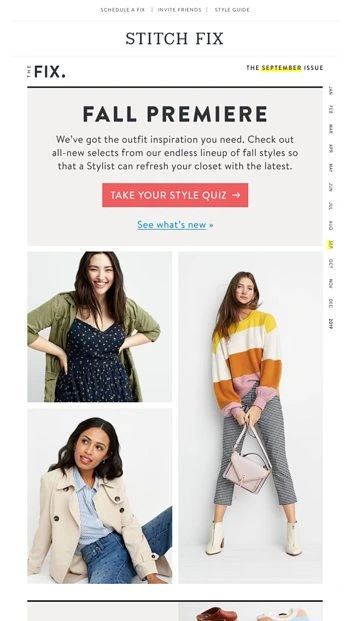
Their recommendation emails include photos of items that the customer might be interested in, along with styling tips and suggestions. This highly personalized approach has helped Stitch Fix to become a leading player in the ecommerce fashion industry.
8. Upsell and Cross-Sell Emails
Upsell and cross-sell emails are incredible tools for increasing customer lifetime value. Upsell emails offer customers an opportunity to upgrade their purchase to a more premium version, while cross-sell emails suggest complementary products that can enhance their original purchase. By providing relevant and personalized product suggestions, these emails can increase the average order value and boost your sales.
For instance, a D2C beauty brand might send an upsell email to customers who have purchased a moisturizer, offering a premium version with added benefits. A cross-sell email might suggest a matching serum or eye cream complement the moisturizer.
D2C brand Casper, known for their high-quality mattresses, uses upsell emails to promote premium pillows or bedding sets. At the same time, their cross-sell emails suggest mattress protectors or bed frames that complement their core product offering. By doing so, Casper increases the average order value of their customers and improves their overall revenue.
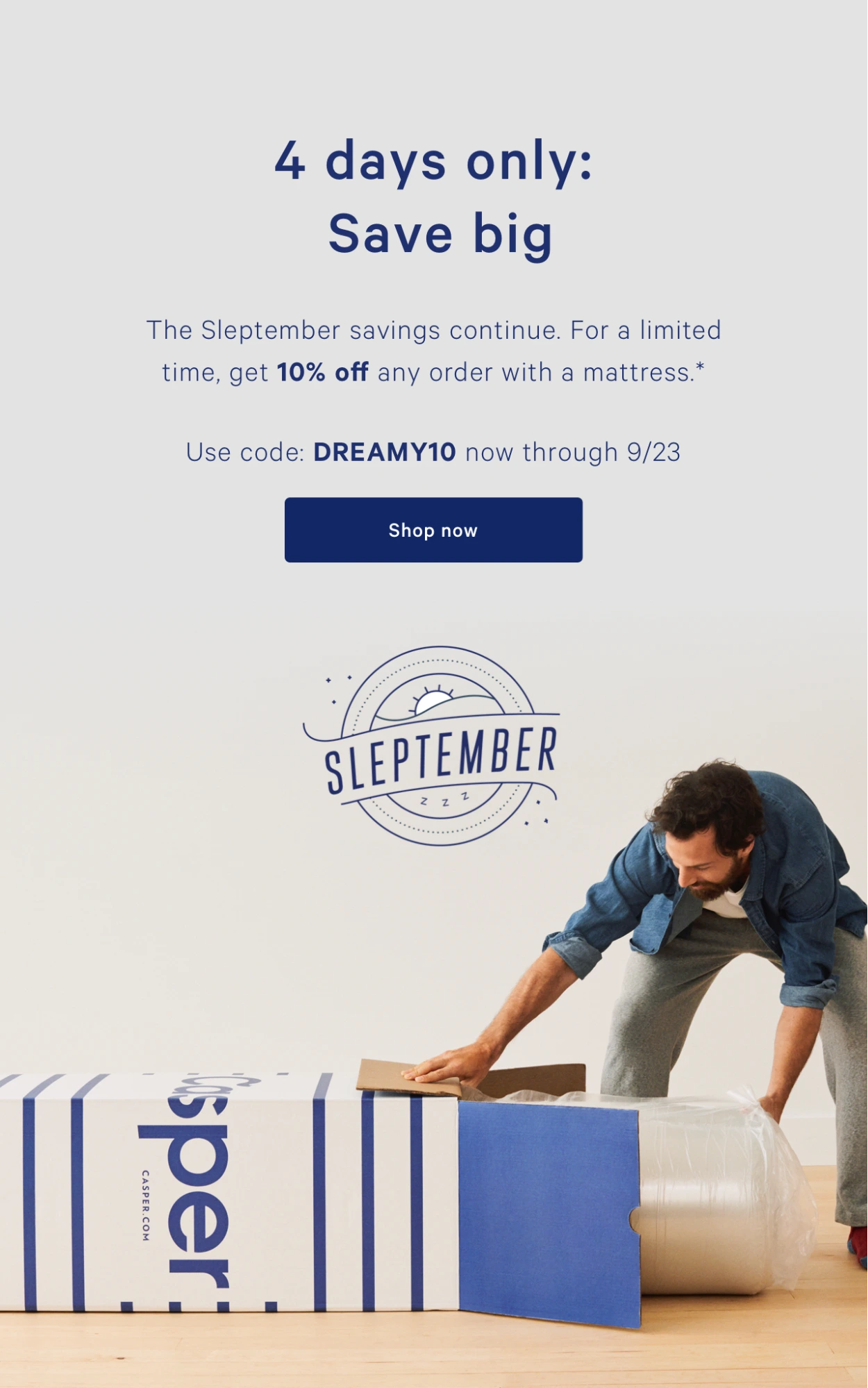
9. Exclusive Offers for Loyal Customers
Exclusive offers for loyal customers are an excellent way to show gratitude towards your most valuable customers. By providing exclusive discounts, special deals, or access to new products or services, you can strengthen the relationship with your loyal customers and make them feel valued. It can also encourage them to continue shopping with your store and spread positive word-of-mouth to their friends and family.
To make your loyal customers feel special, you can send them personalized emails that acknowledge their loyalty and thank them for their continued patronage. You can also use this opportunity to gather feedback on their experience with your store and ask for suggestions on how you can improve.
Warby Parker, the popular eyewear brand, offers exclusive discounts and early access to new product releases to its loyal customers through their email campaigns. These exclusive offers not only make their customers feel valued but also encourage continued patronage.
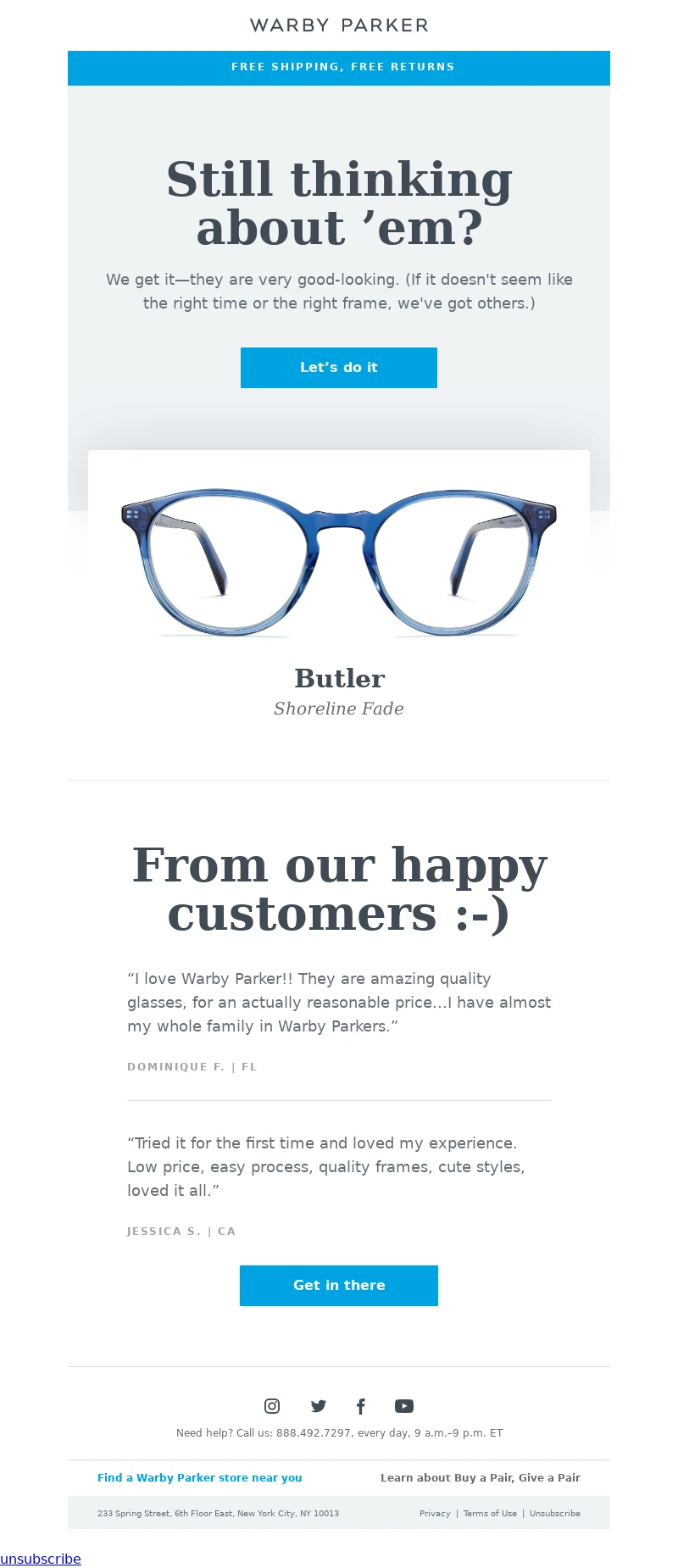
10. Educational Content Emails
Educational content emails provide value to your subscribers beyond just promoting your products or services. These emails offer useful information, tips, and insights that help your customers solve a problem or achieve a goal related to your industry or niche. By providing this type of content, you position yourself as an expert in your field and establish trust with your subscribers.
For example, if you sell fitness equipment, you could send educational content emails that provide workout tips, healthy recipes, or information on the latest fitness trends. This type of content is not only helpful for your customers but also keeps them engaged with your brand even when they are not actively making a purchase.
Educational content emails can also be a great way to nurture leads and move them further down the sales funnel. By providing value through informative content, you can establish a relationship with your subscribers and increase their likelihood of becoming a customer.
A great example of a D2C brand that uses educational content emails effectively is Patagonia. They regularly send emails that provide information on environmental issues, outdoor activities, and sustainable practices related to their products. This type of content aligns with their brand values and helps build a loyal community of customers who share their values.
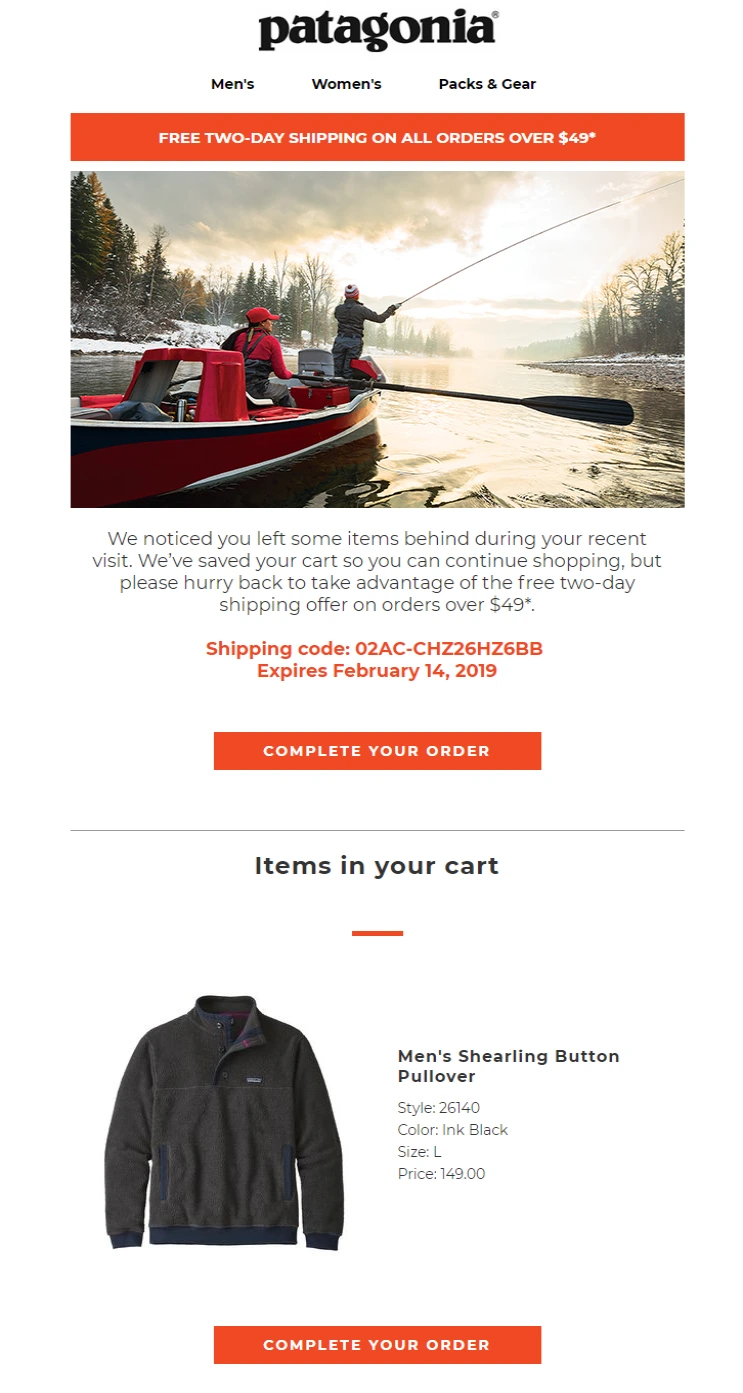
11. Anniversary Emails
Anniversary emails are a great way to make your customers feel special and appreciated. These types of emails are designed to celebrate milestones such as customer anniversaries or birthdays and can help build long-term relationships with your subscribers. By acknowledging these important occasions, you can create a sense of loyalty and strengthen the bond between your brand and your customers.
Milestone and celebration emails can take many different forms, from personalized birthday greetings to special offers on the anniversary of a customer’s first purchase. By tailoring your message to the individual, you can show that you care about their experience with your brand and want to make it as memorable as possible.
For instance, a home goods retailer might send a personalized email to a customer on the anniversary of their first purchase, thanking them for their loyalty and offering a special discount on their next order. By acknowledging this important occasion and offering an incentive to return, the retailer can encourage the customer to continue shopping with them in the future.
D2C brand, Birchbox sends their subscribers personalized birthday emails with exclusive offers and discounts, making their customers feel valued and appreciated. By celebrating these milestones, Birchbox creates a strong sense of community and loyalty among its subscribers, leading to increased engagement and sales.
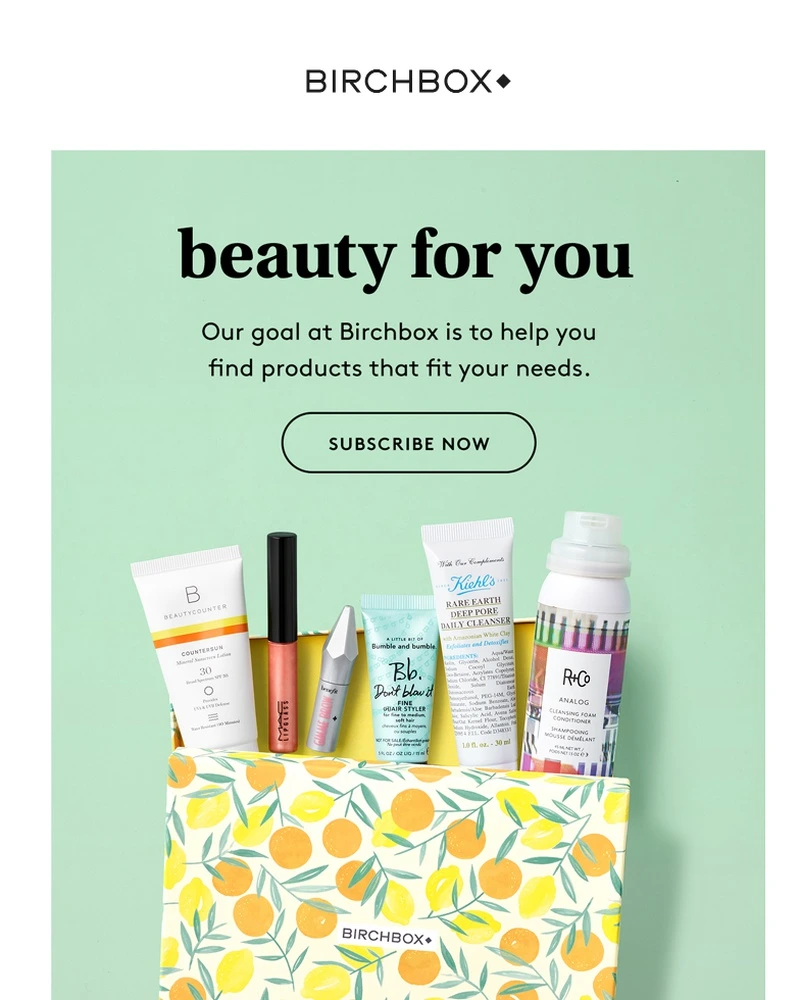
Wrapping Up
As an ecommerce business, you cannot underestimate the power of targeted email campaigns to connect with your customers at various touchpoints along their journey. From welcome emails to anniversary emails, these campaigns offer numerous opportunities to engage with your audience and build lasting relationships.
In addition to delivering valuable content, sending holiday greetings, and providing exclusive offers, effective email marketing can result in higher open rates, increased conversions, and a growing customer base. By implementing these 11 essential email marketing campaigns into your strategy, you can create memorable experiences for your customers and establish a strong presence in the competitive e-commerce landscape.
Start incorporating these campaigns today and watch your business thrive. Remember, the key to ecommerce success is to stay connected and build meaningful relationships with your customers through targeted and personalized email marketing.
You may also like
Essential resources for your success
















